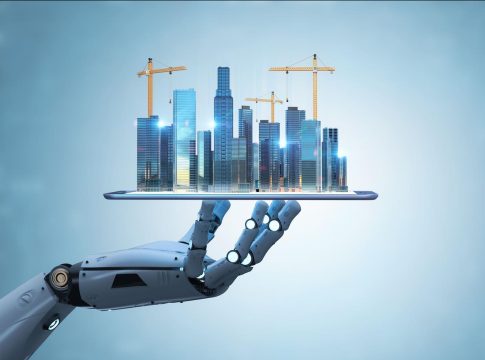Rethinking Architecture with AI: A New Era of Building Design
As you stroll past a sleek, contemporary building, consider the possibility that artificial intelligence (AI) played a crucial role in its creation. From selecting materials to determining optimal sunlight exposure, AI is not merely assisting architects; it’s revolutionizing the entire design process.
The Rise of Generative Design
Generative design tools empower architects by enabling them to input their project goals, constraints, and material preferences. The AI then swiftly generates several viable design options—some conventional, others daringly innovative. This transformative approach allows architects to focus less on repetitive tasks like drafting layouts and more on creativity and vision.
- Time Efficiency: By automating repetitive tasks, architects can iterate their designs quickly.
- Creative Freedom: AI provides a platform for unexpected ideas, enhancing rather than replacing human creativity.
Enhanced Structural Integrity and Planning
Aesthetics may draw people in, but a building’s functionality is paramount. AI-driven structural analysis runs simulations that consider factors such as wind loads and seismic activity to identify vulnerabilities before construction begins. This proactive approach ensures safety and functionality, optimizing the building for real-world challenges.
Additionally, AI simplifies site planning. By examining environmental data and zoning regulations, AI can swiftly identify the most suitable locations for new developments—turning weeks of manual site evaluations into mere minutes of focused analysis.
Cost Management: Smarter Forecasting
Cost overruns are notorious in construction projects. AI tools address this issue by crunching historical pricing data and current market conditions to offer accurate financial forecasts from the outset. When project scopes change—a frequent occurrence—AI can immediately recalibrate budgets, providing real-time insights that keep financial planning on track.
- Clearer Financial Roadmap: Improved cost estimation enhances transparency and assists stakeholders in making informed decisions.
Sustainability Integrated from the Start
Sustainability is no longer an afterthought; it’s a fundamental aspect of modern architecture. AI helps architects design buildings that are energy efficient from day one. By evaluating factors such as insulation and airflow, AI suggests modifications that lower energy consumption without compromising aesthetic vision.
- Carbon Impact Reduction: Smart material selection can lead to significant environmental benefits, reinforcing sustainability as a core design element.
Streamlining Project Management
AI’s influence extends beyond design to project management, where smart tools analyze schedules and resource allocation. These systems can anticipate delays, helping teams communicate effectively and maintain timelines. This integration is particularly beneficial when combined with Building Information Modeling (BIM), where AI can identify potential conflicts—such as misaligned pipes and ducts—before they become costly mistakes.
- Fewer Surprises: AI enhances collaboration among project stakeholders, leading to quicker approvals and smoother workflows.
Conclusion: Architects and AI—A Collaborative Future
AI’s integration into architecture signifies a new chapter where human creativity is augmented by technology, rather than replaced. As architects harness these tools to accelerate workflows and reduce risks, they open doors to unprecedented possibilities in building design. The result is a future where architecture is not just smarter and faster, but also more responsive to the environments we inhabit.
With each innovative skyscraper and energy-efficient residence, AI is reshaping the architectural landscape—proving that the partnership between human and machine can achieve remarkable feats in construction and sustainability.

Writes about personal finance, side hustles, gadgets, and tech innovation.
Bio: Priya specializes in making complex financial and tech topics easy to digest, with experience in fintech and consumer reviews.

